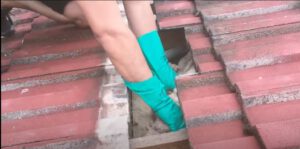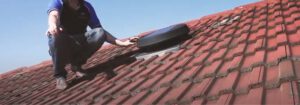Can I Install a Roof-Mounted Ventilation System in My Australian Home?
Posted on: June 12, 2023, by : roofcont Proper ventilation is crucial for maintaining a healthy and comfortable home environment. Without adequate ventilation, excess moisture, odors, and pollutants can accumulate in your home, leading to issues like mold growth and poor indoor air quality. One way to improve ventilation in your home is by installing a roof-mounted ventilation system. But is it possible to do so in Australia? In this article, we’ll explore the answer to that question and more.
Proper ventilation is crucial for maintaining a healthy and comfortable home environment. Without adequate ventilation, excess moisture, odors, and pollutants can accumulate in your home, leading to issues like mold growth and poor indoor air quality. One way to improve ventilation in your home is by installing a roof-mounted ventilation system. But is it possible to do so in Australia? In this article, we’ll explore the answer to that question and more.
What is a Roof-Mounted Ventilation System?
Before we dive into whether or not you can install a roof-mounted ventilation system in your Australian home, let’s first define what it is.
A roof-mounted ventilation system is designed to exhaust stale air from your home and replace it with fresh air from outside. These systems are typically installed on the roof of your home and use either natural or powered methods to move air through your attic or roof cavity.
There are several types of roof-mounted ventilation systems available, including:
- Ridge vents
- Gable vents
- Turbine vents
- Solar-powered vents
Each type has its own advantages and disadvantages, and the best option for your home will depend on factors like the size and shape of your roof, the climate in your area, and your budget.
Are Roof-Mounted Ventilation Systems Available in Australia?
The short answer is yes, roof-mounted ventilation systems are available in Australia. There are several companies that produce and install these systems, including Edmonds, CSR Edmonds, and Solar Whiz.
It’s worth noting that building codes and regulations vary by state and territory in Australia, so it’s important to check with your local council before installing a roof-mounted ventilation system to ensure that it complies with all relevant requirements.
Can Any Roof Support a Roof-Mounted Ventilation System?
One concern homeowners may have is whether or not their roof can support a roof-mounted ventilation system. The answer depends on the condition of your roof and its age.
Before installing a ventilation system, it’s important to have a professional assess the condition of your roof. If your roof is older or in need of repairs, it may not be able to support the added weight of the ventilation system.
Additionally, certain types of roofs, such as flat or very steep roofs, may not be suitable for ventilation system installation. However, most standard pitched roofs can support a roof-mounted ventilation system.
How Do Roof-Mounted Ventilation Systems Compare to Other Ventilation Options?
 When deciding between a roof-mounted ventilation system and other ventilation options, there are a few factors to consider.
When deciding between a roof-mounted ventilation system and other ventilation options, there are a few factors to consider.
One advantage of a roof-mounted ventilation system is that it can be more effective at removing hot and humid air from your home than other types of ventilation, like window fans or exhaust fans. Additionally, a roof-mounted ventilation system can help prevent moisture buildup in your attic, which can lead to mold growth and other issues.
However, there are also some disadvantages to consider. A roof-mounted ventilation system can be more expensive to install than other types of ventilation, and it may not be suitable for all types of roofs. Additionally, because they require installation on the roof, they may be more difficult to access for maintenance and repairs.
Can I Install a Roof-Mounted Ventilation System Myself?
Installing a roof-mounted ventilation system is not a DIY project. It’s important to have a qualified professional handle the installation to ensure that it’s done safely and correctly.
The installation process for a roof-mounted ventilation system will vary depending on the type of system you choose. In general, however, the process will involve cutting a hole in your roof, installing the vent, and connecting it to your home’s electrical system.
Conclusion
A roof-mounted ventilation system can be a great option for homeowners who want to improve the ventilation in their home. While they may be more expensive than other types of ventilation, their effectiveness at removing hot and humid air from your home can make them worth the investment.
If you’re considering installing a roof-mounted ventilation system, it’s important to have a professional assess your roof’s condition and suitability for ventilation system installation. Additionally, be sure to check with your local council to ensure that the installation complies with all relevant building codes and regulations.
